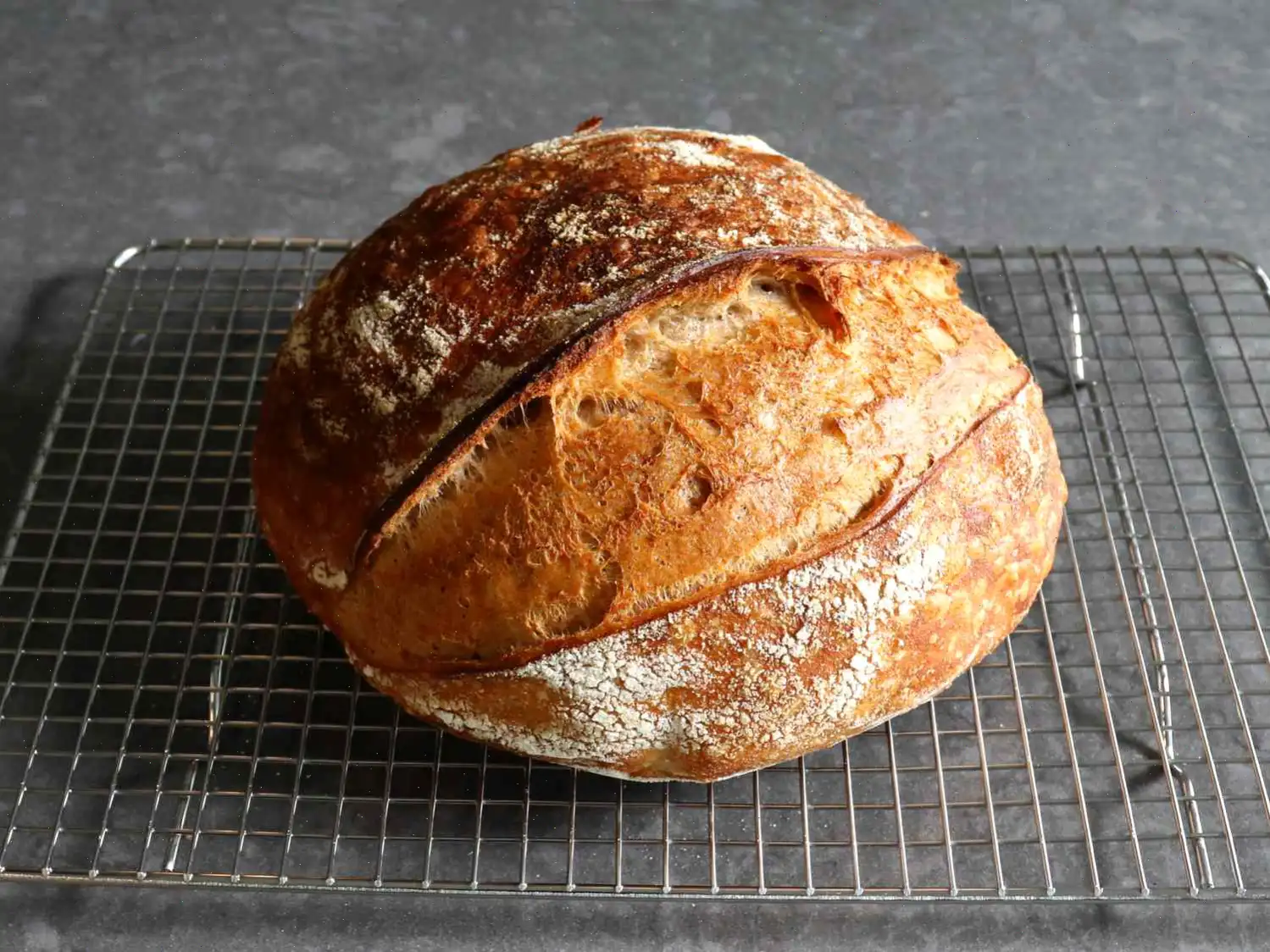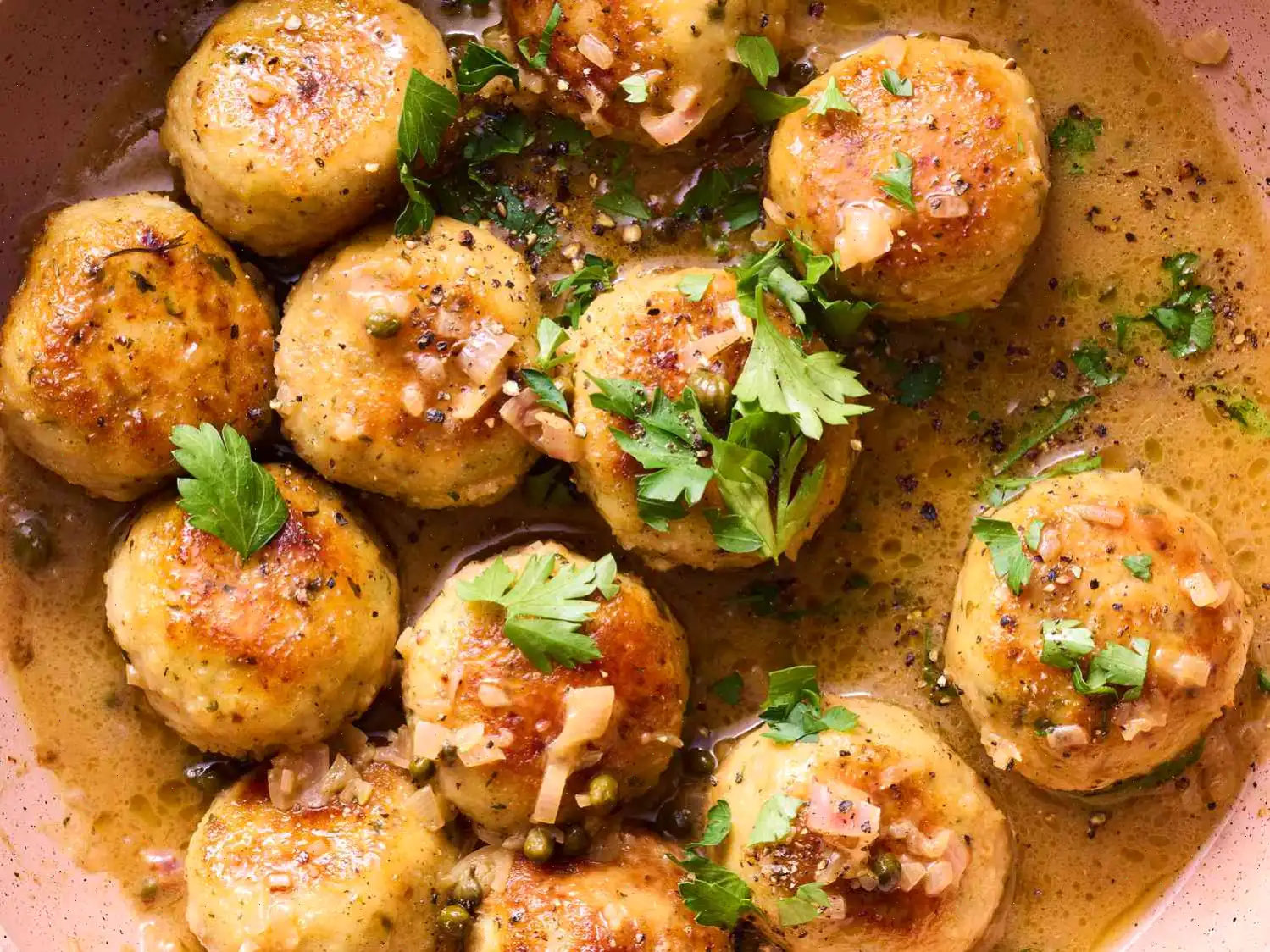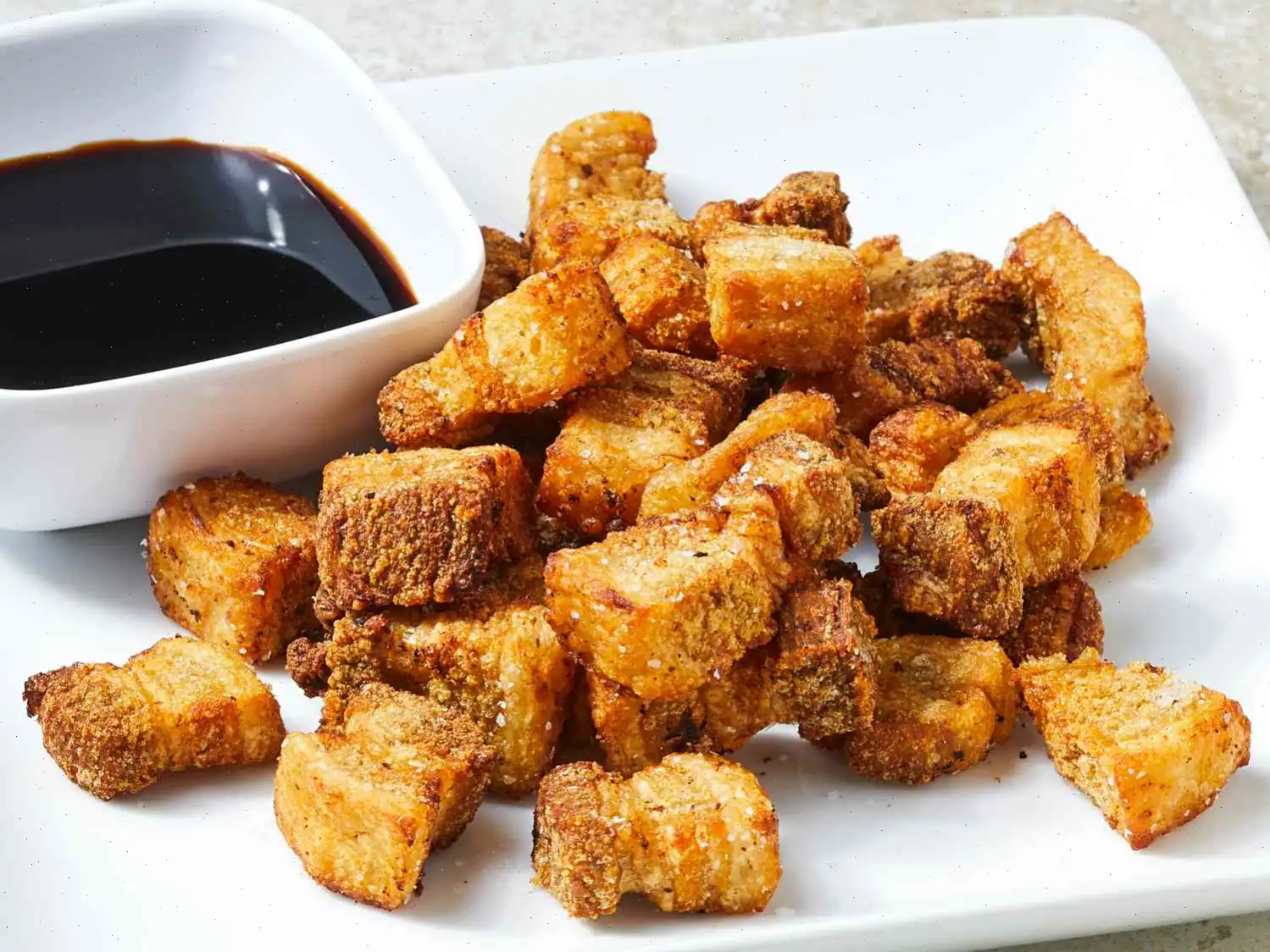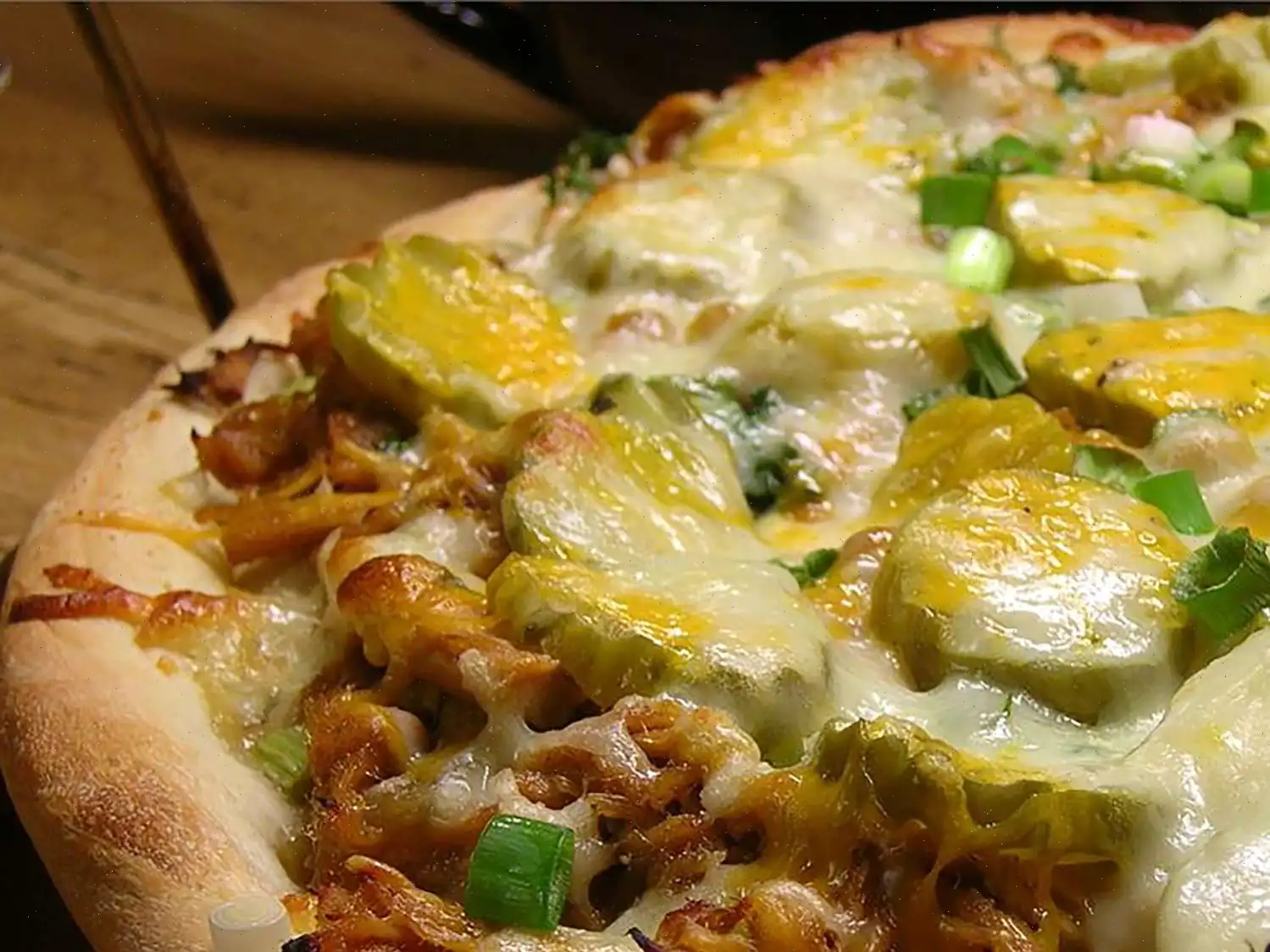
How to Make Sourdough Bread with Levain
This new and improved sourdough took me over a year to develop, but it was well worth the time and effort. I believe this is the best-tasting sourdough Ive ever had. The bread features a lovely open crumb that isnt too airy, all encased in a crisp, beautiful crust. The enhanced flavor comes from a higher whole-wheat flour content and starting the dough with a levain. Although the recipe and ingredient amounts differ, I owe a special thanks to Maurizio Leo from The Perfect Loaf, whose techniques greatly inspired this process. If you haven't seen his sourdough demos yet, I highly recommend checking them out. After reading through this, I hope youll be motivated to make or find a sourdough starter and try this amazing bread soon. Enjoy!
Ingredients
For the Levain
- 100g sourdough starter
- 15g bread flour
- 15g whole wheat flour
- 5g rye flour
- 35g water
For the Autolyse
- 135g whole wheat flour
- 365g bread flour
- 425g water
For the Dough
- 70g levain
- 11g kosher salt or sea salt
- 2 tbsp rice flour (for dusting the banneton)
- 2 ice cubes
Directions
Step 1: Make the Levain
In a small bowl or jar, weigh out the levain ingredients: 100g sourdough starter, 15g bread flour, 15g whole wheat flour, 5g rye flour, and 35g water. Stir the mixture together and leave at room temperature for about 5 hours, or until it's very bubbly and doubled in size.
Step 2: Perform the Autolyse
About 2 hours before the levain is ready, mix together 135g whole wheat flour, 365g bread flour, and 425g water in a bowl. Let this mixture sit for 2 hours. If the levain is ready before the full 2 hours have passed, you can proceed with mixing the dough anyway.
Step 3: Mix the Dough
Weigh out 70g of levain and add it to the top of the autolyse mixture. Sprinkle 11g salt around the edges of the dough. Using damp hands, fold the dough from the edges toward the middle, turning the bowl as you go, until the dough is fully mixed. Cover the bowl and let it rest for 15 minutes. You can return any leftover levain to the refrigerator for future use.
Step 4: Perform the First Set of Folds
With wet hands, lift the dough at the edges and fold it to the center. Turn the bowl a few inches each time as you continue folding. Repeat this process two more times, with 15-minute rests in between. Set a timer for 30 minutes.
Step 5: Stretch and Fold
After the 30-minute rest, turn the dough out onto a clean counter. Stretch it into a rough 12-inch square, then fold the two opposite corners toward the center to create thirds. Next, fold the top half over the bottom half, and roll the dough forward. Use a bench scraper to shape it into a ball. Return the dough to the bowl and cover it.
Step 6: Repeat the Stretch and Fold Process
Repeat the stretch and fold process two more times, each 30 minutes apart. Cover the dough between folds. After the final fold, allow the dough to bulk ferment for 4 to 5 hours, until it has doubled in size and appears bubbly.
Step 7: Pre-Shape the Dough
Turn the dough out onto the counter and shape it into a ball. Dust it lightly with flour and let it rest for 30 minutes.
Step 8: Final Shaping
Dust your work surface with flour and gently move the dough onto it using a bench scraper. Stretch and fold the dough gently to avoid deflation, then shape it into a high, round ball using the bench scraper. Dust the top with flour.
Step 9: Proofing the Dough
Generously dust a banneton with rice flour. Carefully slide the bench scraper under the dough and turn it over into the banneton. For an optional step, you can "stitch" the dough by bringing opposite edges together in the center. Dust the top with a little more flour. Cover the dough and proof it in the refrigerator for 14 hours.
Step 10: Preheat the Oven
About 1 hour before baking, place the pan or pizza stone you'll use to bake the bread into the oven. Preheat the oven to 500F (260C). Allow the oven to fully heat for 1 hour.
Step 11: Score and Bake the Bread
Once the oven is preheated, turn the dough out from the banneton onto a sheet of parchment paper. Score the top of the dough about 1/4-inch deep using a razor or sharp knife. Place the dough into the preheated bread pan or onto the pizza stone, then add 2 ice cubes to the pan. Cover the pan and bake for 20 minutes at 500F (260C).
Step 12: Lower the Heat and Continue Baking
After 20 minutes, remove the cover and lower the oven temperature to 450F (240C). Continue baking for another 35 minutes, or until the bread reaches your desired level of doneness.
Step 13: Cool Before Slicing
Remove the bread from the oven and let it cool for 1 hour before slicing. Enjoy your freshly baked sourdough!
Nutrition Facts (Per Serving)
| Nutrient | Amount | % Daily Value |
|---|---|---|
| Calories | 301 | - |
| Total Fat | 1g | 2% |
| Saturated Fat | 0g | 1% |
| Cholesterol | 0mg | 0% |
| Sodium | 537mg | 23% |
| Total Carbohydrates | 62g | 22% |
| Dietary Fiber | 4g | 14% |
| Total Sugars | 0g | - |
| Protein | 10g | 20% |
| Calcium | 19mg | 1% |
| Iron | 2mg | 10% |
| Potassium | 144mg | 3% |
History of Sourdough Bread
Sourdough bread is one of the oldest forms of bread-making, dating back to ancient Egypt around 1500 BC. The process of naturally fermenting dough with wild yeast and lactic acid bacteria was a method passed down through generations. Unlike modern yeasted breads, sourdough relies on a natural starter, or levain, which contains wild yeasts that ferment the dough. Over the centuries, this technique spread across cultures and became a staple in many regions. In the United States, sourdough is particularly associated with San Francisco, where the cool, foggy climate creates the ideal environment for cultivating the wild yeasts that make the bread so special.
Regional Variations
Sourdough bread is enjoyed worldwide, and various regions have developed their own distinct variations. In the United States, the San Francisco sourdough is the most famous, known for its tangy flavor and chewy texture. The unique microflora in the Bay Area give it a distinctive taste. In Europe, sourdough is common in many countries, including France, where it is used in traditional baguettes, and in Italy, where it contributes to the rustic, hearty flavor of country loaves. In Russia, a version called "Borodinsky" combines rye flour with sourdough starter for a darker, denser loaf. Each region adapts sourdough to local tastes and available ingredients, creating a variety of textures and flavors.
How it Differs from Similar Breads
Sourdough bread stands out from other types of bread primarily because of its fermentation method. Unlike breads made with commercial yeast, sourdough is naturally leavened, meaning it uses a starter culture of wild yeasts and bacteria to rise. This gives the bread a unique tangy flavor, due to the lactic acid produced during fermentation. Additionally, sourdough's crumb is typically more open and airy compared to yeasted breads, with a chewy texture and a thicker, crustier exterior. While breads like baguettes or ciabatta may have a similar open crumb, they are typically made with commercial yeast, resulting in a less complex flavor profile.
Where is Sourdough Bread Typically Served?
Sourdough is a versatile bread that pairs well with a wide variety of dishes. In San Francisco, its often served with clam chowder, served in a hollowed-out bowl made from the bread itself. Its also a common side dish in European meals, served with soups, stews, or roasted meats. In Italy, sourdough may accompany a simple antipasto platter, while in France, its a staple at the dinner table, enjoyed with cheese or pt. Sourdoughs ability to complement both savory and sweet toppings makes it a beloved choice for breakfast, lunch, or dinner. Its hearty, chewy texture and slightly sour flavor also make it perfect for toasting, with butter or as a base for avocado toast or sandwiches.
Interesting Facts about Sourdough Bread
- The longest continuously running sourdough starter in the world dates back over 150 years and is kept alive by the staff of the Boudin Bakery in San Francisco.
- In the California Gold Rush of the 1840s, prospectors used sourdough bread as a reliable source of nourishment, giving rise to the nickname "sourdough" for miners.
- The "sourdough tang" that characterizes the bread comes from the naturally occurring bacteria, specifically Lactobacillus, which ferments the flour and produces lactic acid.
- Each sourdough starter is unique to its environment. Factors such as temperature, humidity, and local flora affect the development of the yeast and bacteria in the starter, giving each loaf a distinct flavor profile.
- Making sourdough bread can be a time-consuming process, often requiring hours of preparation and waiting for the dough to ferment and rise, but the results are well worth the effort.
FAQ about How to Make Sourdough Bread with Levain
Comments
Barbie
10/06/2025 01:52:54 PM
I've been baking sourdoughs for a while now and really wanted to try this since I LOVE Chef John's recipes. This was just way too hydrated of a dough for me. I found it hard to work with. Maybe I'll try again without as much wheat flour.
HeartyPea9878
02/18/2025 01:44:12 PM
I’ve been baking sourdough for 10 months now and this is the best mine has turned out! I think the technique of taking it out of the bowl to do 3 big stretches and folds is the difference!
LimeBagel9105
10/12/2024 05:16:23 PM
I love all recipes from Chef John. However, this one was not so good. I've baked lots of sourdough loaves in my time. This one, the hydration is too high. I followed the directions to the letter and still the dough is unmanageable. I actually tried to make it twice. Both times a disaster. You're supposed to round the dough into a ball. Not happening. Was unable to get a ball with a tight skin. The dough would just loose all shape. I didn't want to pour this liquid dough into my bannetons. Do not recommend.
HotTongs2250
02/12/2025 09:27:02 PM
As mentioned in other reviews the hydration is quite high. My first time baking this bread was a disaster, but I was able to get in to the banneton and then in the frig overnight. I did get it baked the next morning and the bread did come out beautiful and tasty. Excellent bread just very difficult to work. Has anyone tried using less water?
KindSquid7825
12/21/2024 10:15:53 PM
This is great and has been fooled proof for me!
Eric Miller
06/30/2024 10:27:37 PM
Bro, my stomach is fully satisfied.
Dan-M
05/19/2024 07:43:06 PM
Past loaves I've made everything when in a bowl all at once. First time with this method. This ended up being my largest loaf I've made and it's very tasty.
Brandon Lee
05/15/2024 05:05:45 AM
Couldn’t believe it was ready so quickly.
Sharyl
05/11/2024 12:49:48 AM
In the spirit of "don't let the food win", I was able to produce a beautiful sourdough loaf on the third try. Finally - after purchasing bread flour and very accurately measuring/weighing the ingredients (especially the water). It was a challenge, but with the provided detailed instructions, I have achieved the sourdough bread I was looking for.
ZippyBoba8315
04/30/2024 12:14:38 PM
86% hydration is not for the faint of heart. I added a tablespoon of vital wheat gluten at the start and then had to work more flour in during the counter stretch and fold in order to make it manageable. I used KA bread and wh flours. Perhaps the humidity level in the flour was high, but I am not sure it would have made that much of a difference.
Diane Wilson
04/15/2024 11:31:58 AM
So simple, yet so satisfying.
ElfinDate8130
04/09/2024 05:04:02 PM
This is a really nice recipe, easy to follow instructions. Really flavorful. Thank you Chef John,this one's a keeper.








